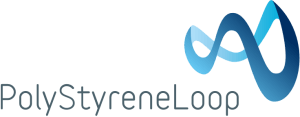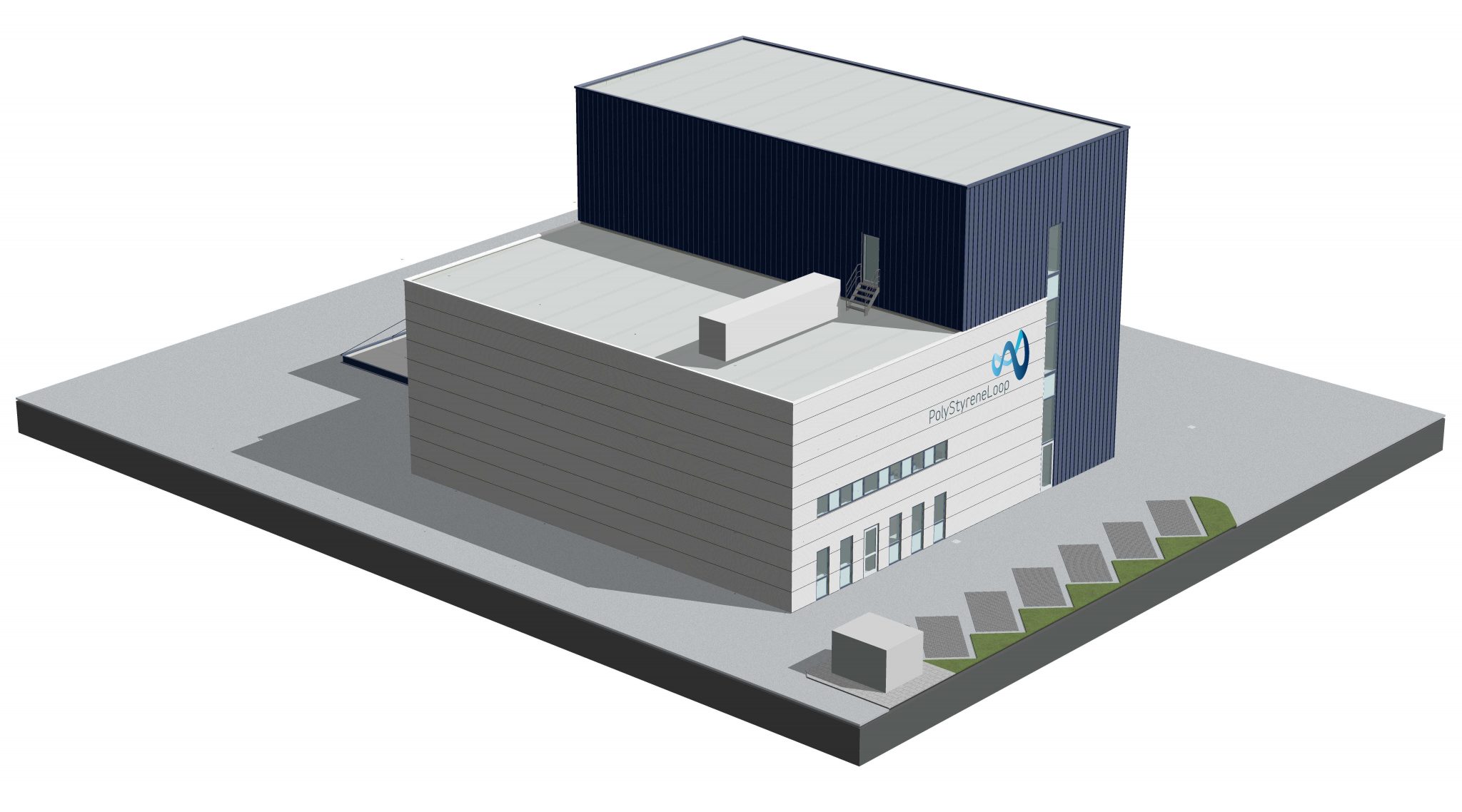Next Topic
Select SDGs to find out how we are taking action in support of the UN Substinable Development Goals
2021 ISRAEL CHEMICALS LTD. | ALL RIGHTS RESERVED

PolyStyreneLoop is a cooperative representing more than 70 companies from the polystyrene foam value chain. Its members include polystyrene raw material producers, foam manufacturers, additives suppliers, foam converters and recyclers as well as EUMEPS, the association and voice of European Manufacturers of Expanded Polystyrene.
A new recycling plant in the Netherlands will recycle expanded polystyrene (EPS) demolition waste and a legacy additive previously thought impossible to recycle. The PolyStyreneLoop facility will recycle EPS insulation using a physical recycling process based on the CreaSolv® Technology. This technology will turn EPS foam demolition waste from old building insulation into new high quality raw material. All kinds of impurities, such as cement or other construction residues, as well as the legacy flame retardant HBCD, will be safely removed and the valuable bromine it contains recovered.
Polystyrene foams have long been used as building insulation and packaging material. They are known for their outstanding insulation and shock absorbing abilities. They are well tried and tested for use in various applications. Used PS foams remain a valuable material source for new raw material and for a variety of products. In the packaging sector, there are already many successful recycling systems in place throughout Europe.
PS foams used for insulation boards contain HBCD, a flame retardant that has been used since the 1960s. HBCD has been the best solution to ensure safety in case of fire and to meet national fire regulations for many years. However, HBCD is now considered a restricted substance. It can therefore no longer be reused. Millions of tonnes of PS foam waste in Europe can no longer be regularly recycled.
The project is an essential contribution to the EU’s efforts to develop a sustainable, low carbon, resource efficient and competitive economy.” Mr. Paolo Sandri

A physico-chemical recycling process can now preserve high quality PS which can then be used as raw material for new foams after safely removing the flame retardant HBCD from the PS foam. The HBCD is destroyed in ICL’s hazardous waste incinerator at the Company’s Terneuzen site which is equipped with a Bromine Recovery Unit (BRU). This facility ensures the safe recovery of the valuable bromine component. The recovered Bromine is re-used to produce new brominated polymeric flame retardants like FR-122P, which are then incorporated in new PS foams used for insulation that meet fire safety standards.
Recycling PS foam typically saves as much as 50% CO2 emissions (compared to using it for energy recovery via incineration). This technology offers an additional contribution to resource efficiency at the end-of-life phase for PS foam insulation, in addition to CO2 emissions already saved by reducing energy consumption during the long use phase of a building.
It’s a real plus that the plant can not only take care of current recycling waste but also legacy recycling waste...moreover, we can do this with about the same energy input as mechanical recycling and the energy we use comes from windmills [renewable energy].”
Jan Noordegraaf, co-director of the plant
The PSL project won the Blue Tulip Award 2020 in the climate category. The award identifies the most promising start-ups and innovations in the Netherlands across eight categories. The expert jury recognized the innovative technology behind the PolyStyrene Loop, its disruptive business model as a cooperative and the scalable solution with impact that brings the circular economy in action.
PSLoop was shortlisted (one of the three final candidates) for the Dutch EZK Award as the most innovative solution to prevent climate change.
The innovative PSL project employs a ground-breaking technology to separate the recently restricted chemical, HBCD, from PS foam waste, while also enabling recovery of bromine which can then be reused to produce new flame retardants such as FR-122P produced at ICL Terneuzen and Neot-Hovav. This technology has already been included in the technical guidelines under the UNEP Basel Convention as a best available technology to handle HBCD-containing waste.
The PSL project goal is to simultaneously enable the recycling of PS foam waste, treat and destroy HBCD residues and recover bromine in line with the new European POPs (Persistent Organic Pollutants) regulation. This will be accomplished through an innovative recycling process of 3,000 tonnes of PS per year, and by organizing the value chain through a collaborative model which will hopefully trigger further replication throughout Europe.
The PolyStyrene Loop large-scale demo plant is to begin operations in 2021 and will have the capacity to treat up to 3,300 tonnes of PS waste per year. Once it is up and running, the PSL project will take incoming PS foam waste streams and produce a high-quality result that can be used in new PS foam insulation installations. The demonstration plant is being established in Terneuzen, Netherlands, adjacent to ICL’s site, and will work with the CreaSolv® Technology.

As an industrial pioneer project promoting Circular Economy, the PSL project will help the EU deal with over 20 million tonnes of expected insulation waste material containing HBCD that must be disposed over the next 50 years.
It encourages industry-led and market-based initiatives to be carried out with all partners along the value chain. It is a signal to other polymer producers that cooperation can lead to additional circularity and sustainability.”
Mr. Paolo Sandri, speaking on behalf of the Directorate-General for Internal Market, Industry, Entrepreneurship and SMEs of the European Commission.
The PolyStyrene Loop Cooperative is a non-profit organization created by ICL and Synbra Technology under Dutch law. More than 70 members of the initiative are industry representatives from throughout the entire polystyrene foam value chain, many of whom are SMEs (small-medium enterprises): PS foam manufacturers, raw material and additives suppliers, foam converters, and recyclers. The initiative was established to demonstrate the technical and economic feasibility of recycling polystyrene (PS) insulation foam waste and the recovery of bromine. The PSL project demonstrates how the polystyrene value chain meets the fundamental requirements of a circular economy by ensuring a technically, economically and environmentally sustainable closed-loop recycling system.
In a milestone for plastics recycling in Europe, a new recycling plant for expanded polystyrene (EPS) demolition waste opened today in Terneuzen, the Netherlands in the presence of the local mayor and industry representatives.
EPS is a lightweight foam composed of 98% air and 2% technology with outstanding protective and thermal insulation properties. It is widely used as an insulation material in buildings as well as in packaging to protect all type of goods. Until now it has been considered difficult to recycle because of impurities such as cement or other construction residues. The EPS itself is 100% recyclable.
The PolyStyreneLoop recycling plant was built to prove the technical and economic feasibility of a large-scale, closed-loop solution for the recycling of EPS demolition waste. It will initially recycle building & construction (B&C) waste from the Netherlands and Germany and turn it into new, high-quality insulation material. Later it will also take in demolition waste from other countries.
The legacy additive HBCD, as well as other kinds of impurities such as construction residues or cement, will also be safely removed while recovering valuable bromine.
We are thrilled that this plant is now operational after many years of hard work,” said Lein Tange, Co-Director of PolyStyreneLoop. “It brings us one step closer to closing the loop on EPS recycling in Europe.”
The plant is able to recycle 3,300 metric tonnes of polystyrene foam demolition waste coming from B&C a year, thus validating the technical, environmental and economic feasibility of a new recycling process in which polystyrene foams containing HBCD can be fully integrated in the circular economy instead of being lost from circularity. Later, it will also recycle extruded polystyrene, or XPS.
This plant is an asset for the Netherlands and Europe,” said Dutch State Secretary for Infrastructure and Water Management Stientje van Veldhoven in a video message. “PolyStyreneLoop is a great example of value creation, and it is starting a giant flywheel and a business model that deserves to be propagated; and it will be.”
“It’s wonderful to have this flagship recycling plant in our community,” Terneuzen Mayor Erik van Merrienboer said at the official opening. “I hope this new plant will contribute to more sustainable building renovation.”
PolyStyreneLoop’s legal structure is also unique. Its members comprise more than 70 industry representatives from the whole polystyrene foam value chain. It was built by the PolyStyreneLoop Cooperative with support from a European Union LIFE programme grant.
At the end of the event, Jan Noordegraaf, Co-Director of PolyStyreneLoop expressed his gratitude to ICL-IP, BEWi Circular, Lanxess, EUMEPS, Rabobank, Synthos, IVH, Rygol, Kingspan, FSDE, Philippine, HSV and Sunpor Kunststoff , for sponsoring the event.

By 2030, upgrade infrastructure and retrofit industries to make them sustainable, with increased resource-use efficiency and greater adoption of clean and environmentally sound technologies and industrial processes with all countries taking action in accordance with their respective capabilities.
By 2020, achieve the environmentally sound management of chemicals and all wastes through their life cycle, in accordance with agreed international frameworks and significantly reduce their release to air, water and soil in order to minimize their adverse impacts on human health and the environment.
By 2030, substantially reduce waste generation through prevention, reduction, recycling and reuse.
Encourage and promote effective public, public-private and civil society partnerships, building on the experience and resourcing strategies of partnerships
